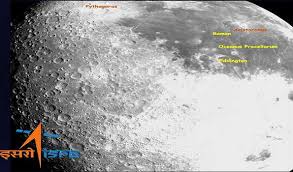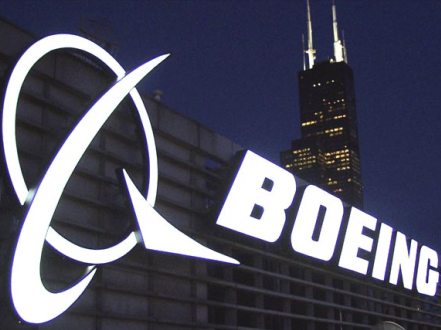
Moon imaged by Lander Horizontal Velocity Camera (LHVC) on August 6, 2023. Photo: ISRO.
BENGALURU (PTI): India's ambitious Chandrayaan-3 spacecraft on Wednesday successfully underwent a fifth and final lunar-bound orbit manoeuvre, bringing it even closer to the surface of the Moon.
With this, the spacecraft has completed all of its Moon-bound manouvres, and it will now prepare for separation of the lander module -- comprising the lander and rover -- from the propulsion module.
"Today's successful firing, needed for a short duration, has put Chandrayaan-3 into an orbit of 153 km x 163 km, as intended. With this, the lunar bound maneuvers are completed. It's time for preparations as the Propulsion Module and the Lander Module gear up for their separate journeys," ISRO said in a post on X (formerly Twitter).
Separation of the lander module from the propulsion module is planned for August 17, it said.
Post its launch on July 14, India's third Moon mission Chandrayaan-3 entered into the lunar orbit on August 5, following which orbit reduction manoeuvres were carried out on August 6, 9 and 14.
As the mission progressed, a series of manoeuvres were being conducted by ISRO to gradually reduce Chandrayaan-3's orbit and position it over the lunar poles.
After separation, the lander is expected to undergo a "deboost" (the process of slowing down) to place it in an orbit, where the Perilune (closest point to the Moon) is 30 kilometres and Apolune (farthest point from the Moon) is 100 km, from where the soft landing on the south polar region of the Moon will be attempted on August 23, ISRO sources said.
ISRO Chairman S Somanath recently said the most critical part of the landing is the process of bringing the velocity of the lander from 30 km height to the final landing, and that the ability to transfer the spacecraft from horizontal to vertical direction is the "trick we have to play" here.
"The velocity at the starting of the landing process is almost 1.68 km per second, but this speed is horizontal to the surface of the moon. The Chandrayaan-3 here is tilted almost 90 degrees, it has to become vertical. So, this whole process of turning from horizontal to vertical is a very interesting calculation mathematically. We have done a lot of simulations. It is here where we had the problem last time (Chandrayaan-2)," Somanath explained.
Further, it has to be ensured that fuel consumption is less, the distance calculation is correct, and all the algorithms are working properly, he added.
"Extensive simulations have gone, guidance design have been changed, and a lot of algorithms have been put in place to make sure that in all these phases required dispersions are handled...to attempt to make a proper landing," he said.
Over five moves in the three weeks since the July 14 launch, ISRO had lifted the Chandrayaan-3 spacecraft into orbits farther and farther away from the Earth.
Then, on August 1 in a key manoeuvre -- a slingshot move -- the spacecraft was sent successfully towards the Moon from Earth's orbit. Following this trans-lunar injection, Chandrayaan-3 escaped from orbiting the Earth and began following a path that would take it to the vicinity of the Moon.
Chandrayaan-3 is a follow-on mission to Chandrayaan-2 (2019) to demonstrate end-to-end capability in safe landing and roving on the Moon's surface.
It comprises an indigenous propulsion module, lander module, and a rover with an objective of developing and demonstrating new technologies required for inter-planetary missions.
The propulsion module other than carrying the lander and rover configuration till about 100 km lunar orbit, has Spectro-polarimetry of Habitable Planet Earth (SHAPE) payload to study the spectral and polarimetric measurements of the Earth from the lunar orbit.
The mission objectives of Chandrayaan-3 are to demonstrate safe and soft landing on the lunar surface, to demonstrate rover roving on the Moon, and to conduct in-situ scientific experiments.
The lander will have the capability to soft land at a specified lunar site and deploy the rover that will carry out in-situ chemical analysis of the Moon's surface during the course of its mobility.
The lander and the rover have scientific payloads to carry out experiments on the lunar surface.
 Previous Article
Previous Article Next Article
Next Article












The Indian Air Force, in its flight trials evaluation report submitted before the Defence Ministry l..
view articleAn insight into the Medium Multi-Role Combat Aircraft competition...
view articleSky enthusiasts can now spot the International Space Station (ISS) commanded by Indian-American astr..
view article